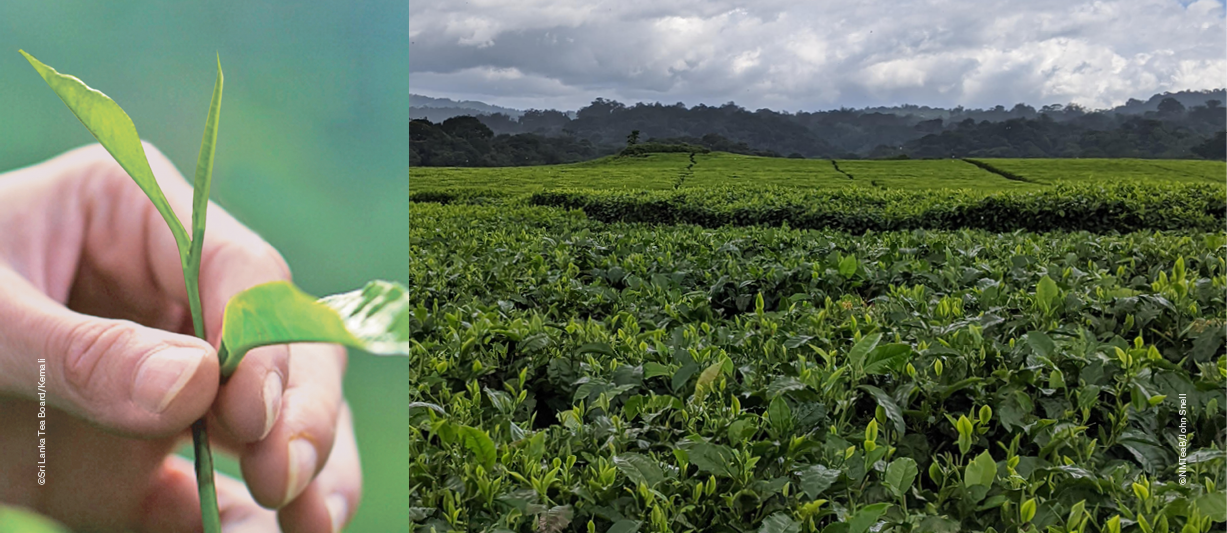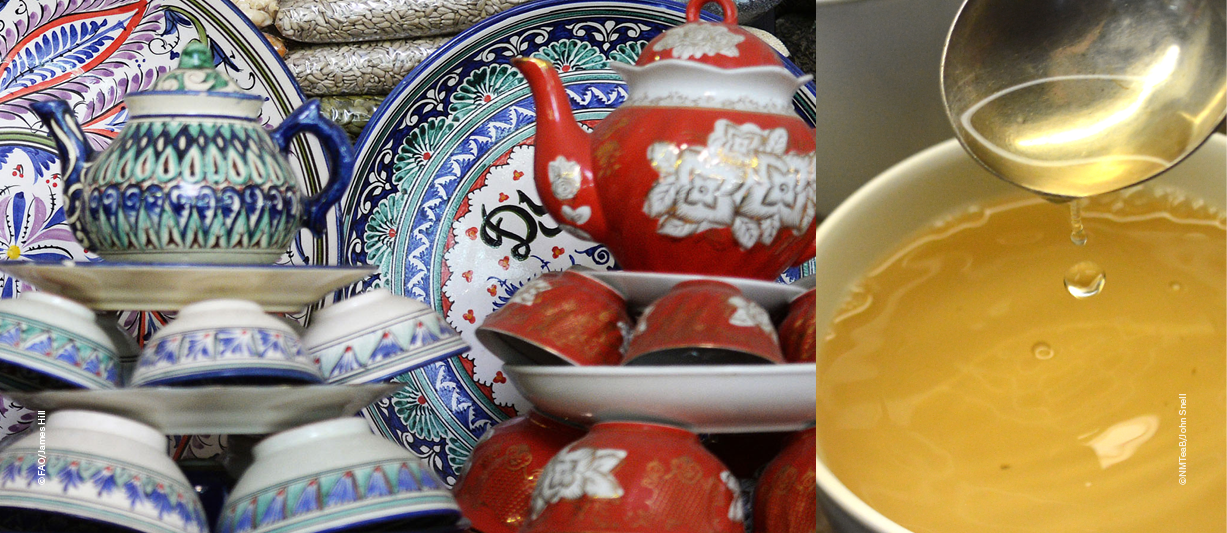Cultivating the burgeoning tea industries in Georgia and Azerbaijan

International Tea Day 2022 is a chance to focus on the impact the tea trade has on farmers, economies and the environment. Two reports on the Georgian and Azerbaijani tea sectors look at how strategic investment can overcome barriers and help the industries flourish.
The reports from the Food and Agriculture Organization of the United Nations (FAO) Investment Centre and the European Bank for Reconstruction and Development (EBRD) focus on opportunities to enrich tea quality, improve profitability, boost competitiveness and enhance environmental sustainability.
“These reports will inform policy and investment decisions in Georgia and Azerbaijan,” said Wafaa El Khoury, FAO Investment Centre Service Chief. “We highlight the potential for public and private players working together, to refine tea cultivation and processing, and expand domestic and international markets.”

‘Chay’ customs and tea traditions
Tea has deep roots in Azerbaijan, where ‘chay’ ceremonies are at the heart of auspicious occasions such as marriage and childbirth, and tea houses or “chaykhanas” are popular nationwide.
Georgia and Azerbaijan are historically part of the world’s northernmost tea-producing region which supplied most of the tea consumed in the former Soviet Union in the 1980s, making the Soviet Union the fourth largest tea producer in the world after India, China and Sri Lanka.
With the fall of the Soviet Union, these tea industries suffered a dramatic decline. Today, with a combined production of around 3 000 tonnes, they only account for under 0.05 percent of global tea production.
Now, with public and private support and investment, there is potential for revitalization in some key components of the Georgian and Azerbaijani tea industries.

‘Quality over quantity’?
The global tea market is booming, with global consumption and production rising by 50 percent in the decade to 2017.
Yet, the new reports indicate that a two-tier industry is emerging. On the one hand there is a proliferation in industrial grade product, used in bottled teas, decaffeination and for mass-market consumption.
In parallel, there is a budding artisanal industry, providing relatively small quantities of expensive but high-quality teas.
“Producers in Georgia and Azerbaijan have the option to be a low-cost providers of industrial tea, or to concentrate on cultivating top-quality tea in line with high-value consumers’ expectations,” said Dmitry Prikhodko, Senior Economist, FAO Investment Centre and lead author of the reports.
Organic growth
The specialty and health and wellness categories of the tea trade are central to global expansion, with Europe and North American markets leading the way.
“The escalating consumer demand for certified organic, green and health and wellness teas, as well as for high quality in developed markets, suggest that these products could define the future focus for the Azerbaijani and Georgian tea industries,” said Jacopo Monzini, Senior Natural Resources Management Officer, FAO Investment Centre, co-author of the reports.
The reports highlight the comparative advantage for chemical-free green tea production, in compliance with growing consumer demands. Green tea cultivation also allows for the use of less labour-intensive and more cost-effective mechanized harvesting, without affecting the quality of final product.
These opportunities are combined with a proximity to traditional markets in former Soviet Union countries and high-value ones in the European Union.
The potential for consumer growth in high-value export markets is capped by a lack of widespread organic certification.
If testing and certification schemes corroborate that Azerbaijani and Georgian teas are organic, this could provide a substantial competitive marketing advantage.

Marketing the ‘Made in Georgia/ Azerbaijan’ brands
Northerly latitude combined with unique composition and relatively long dormancy period for the tea plants, creates distinctive teas – naturally catering to connoisseurs.
Yet, tea quality ultimately depends on precise plucking of raw – or green – tea leaf, as well as cutting-edge processing and manufacturing methods.
Newly established plants in Azerbaijan and Georgia use high-quality imported rollers, roast machines and dryers. But the reports highlight deficiencies in the plucking and post-harvest handling of green leaf in many cases, which leads to deterioration in the final product.
Marketing artisanal brands also demands an enforcement of rules of origin and geographical indications. For “Made in Azerbaijan / Georgia” tea to achieve domestic and export market recognition and attract consumers, clear labelling should highlight domestically grown teas, and specify tea blends which contain imported tea combined with locally produced leaf – sometimes at minimal quantities.
“With the right investment, producers can increase productivity of existing fields, upgrade mechanization and refine the manufacturing process, with a goal to replace foreign teas in domestic black tea packs and expand the export market,” said Nemanja Grgic, Principal, Agribusiness Advisory, EBRD.
Selective mechanized harvesting methods and a focus on green tea production could significantly improve margins, with estimates suggesting that annual gross margins per hectare could be improved up to seven times in both countries.

Meeting consumer demand in a changing climate
Responding to the expanding market for tea in a changing climate is not clear-cut. The tea plant is highly sensitive to changes in growing conditions, with commercial tea cultivation confined to specific geographical locations – compounding its vulnerability to climate change.
On the other hand, establishing tea plantation on agriculture slopes prone to soil instability, erosion and landslides could reduce the risk of land and mudslides, whilst increasing carbon removal.
To build climate resilience in Azerbaijan and Georgia, the reports suggest a suite of measures to protect and expand the tea industries sustainably, including adapting agronomic practices, irrigation investment and preventative pest control.
The reports provide clear rationale for investment in non-intensive, climate-smart and organic protocols, to benefit Georgian and Azerbaijani tea plantations and producers, in line with consumer trends.
As climate change and environmental concerns will adversely impact tea production, stakeholders must act pre-emptively to ensure long-term environmental and economic sustainability.

